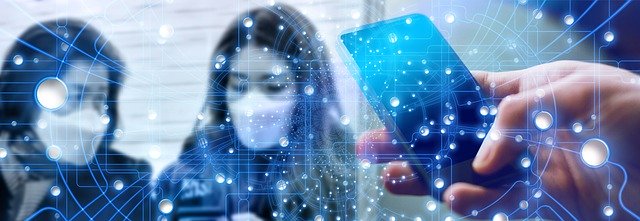By Alain Goudey – Chief Digital Officer at NEOMA Business School
Local areas are in frontline concerning the management of pandemics as this latter evolves mainly by local clusters that can dramatically increase in numbers. The strategy against pandemics is global but the action is local.
As seen worldwide, AI, robots, drones, smartphones and more globally technological innovations can help governments to address the viral outbreaks in order to enhance the accuracy and efficiency of the responses to pandemics. These technologies can help to model the epidemics and its evolution by gathering data on what happens locally. They can also help to maintain quarantine restrictions or inform people about the virus. Logistically it means that smart city technologies can help to handle pandemics.
However, this technological feasibility has to always to be balanced with the questions of ethics, privacy, security of data, and individual freedom. Digital tracing is a delicate issue that should not be treated lightly, even in times of health crisis. It is well known that a technology is not good or bad by itself but the way it is used really determines its positive (or negative) impact on humans.

What technologies can help during pandemics?
Worldwide, some countries have shown that technologies could help to slow down the spread of the virus. These are quite numerous, but below I list here some of the most innovative ones.
Drones are standardly equipped with cameras and can also embark loudspeakers. Thus, they can help to cover wide area in order to find citizens that are breaking rules or at least not respecting government instructions. It has also been used in a way to simply convey an audio message to warn the population and keep citizens informed of what to do. Sometimes, cameras are AI-enhanced and can identify people.
AI-enhanced cameras have been widely used in China, where authorities are using AI recognition technology to track people in order to prevent instruction violations or to automatically measure temperatures and identifying who might be infected. This technology can be as various as drone cameras, public space ones, embarked camera in police cars, in transportation hubs, etc. AI-enhanced cameras can also track movement of people thanks to license plate readers for instance.
Bots have been developed worldwide as this conversational technology can help to inform people on the virus, help them to identify whether they are infected or not, give them specific care gestures. For instance, Kwalys or Clevy, French startups have launched bots to inform and establish a pre-diagnosis and unclog the healthcare facilities. Key companies or even governments have also developed their bots: Microsoft, Google, IBM or the French government.
Analytics technologies & big data: these technologies are useful to create maps of what’s happening locally, it also helps in showing flows and movements of population in order to model the dynamics of the viral spread. To help analysis, the French government has released all the public data in an open data approach, but it is also the case of John Hopkins University. Disseminating information quickly and accurately publicly has a key role to play to manage a good communication and specifically the transparency of this communication.
It is also a major issue to work with the same datasets at a local area as soon as possible in order to increase effectiveness of responses and avoid disjointed actions. Last but not least, good data means a strong ability to predict what could happen. These technologies can be highly helpful to understand where there is a highest likelihood of new clusters or also understanding what the key factors of emerging diseases are.
What about e-privacy and GDPR vs. ability to prevent pandemics?
As mentioned above data is key to helping in dealing with pandemics but these must be used very carefully. Temptation can be high to collect geolocative information continuously without the consent of users in order to better fight against viral outbreaks.
However, according to GDPR and ePrivacy European directive, digital applications must use anonymized data and to obtain the consent of individuals. Moreover, in the case of pandemics, governments or hospitals are dealing with a huge amount of health data and must be very careful in terms of collect, use, analysis, storage and time usage of this highly sensitive data. According to the French organism CNIL, a crisis is not an opportunity to break the rules of a good data management!
Google and Apple are joining the debate on tracking as they have announced on the 10th April to join their forces to create a contact-tracing opt-in-based tool. That’s a big news as this kind of application (based on the DP3T protocole) needs a large audience of users (millions of people) to be really helpful in fighting a pandemic. This rare collaboration between these two Silicon Valley’s rivals opens a real opportunity to succeed while they are covering 3 billion of people with their iOS and Android operating systems… depending of course of their use of data!
In conclusion, technological innovations can help us to handle pandemics, but the technological feasibility is one thing… the other things to balance with are the privacy and freedom of citizens. This period is so special that we can see people on Facebook… to complain about the privacy of these possible contact-tracing applications(!), at least highlighting the lack of knowledge of what happens concerning data on social networks.


